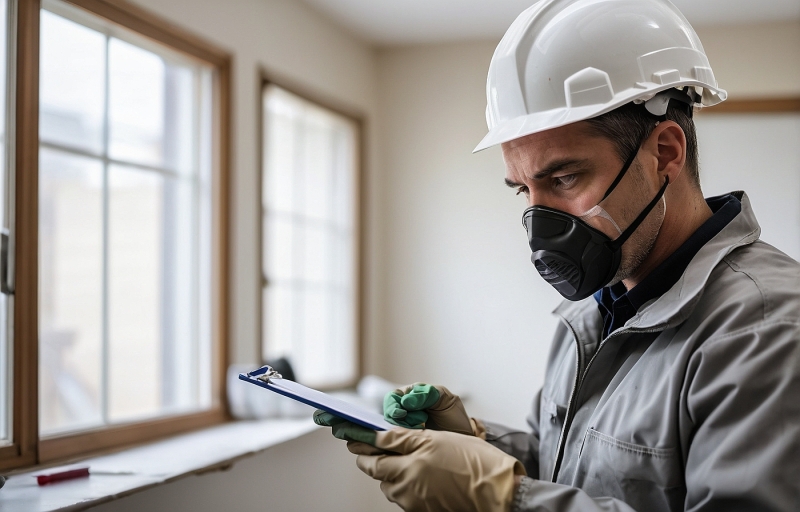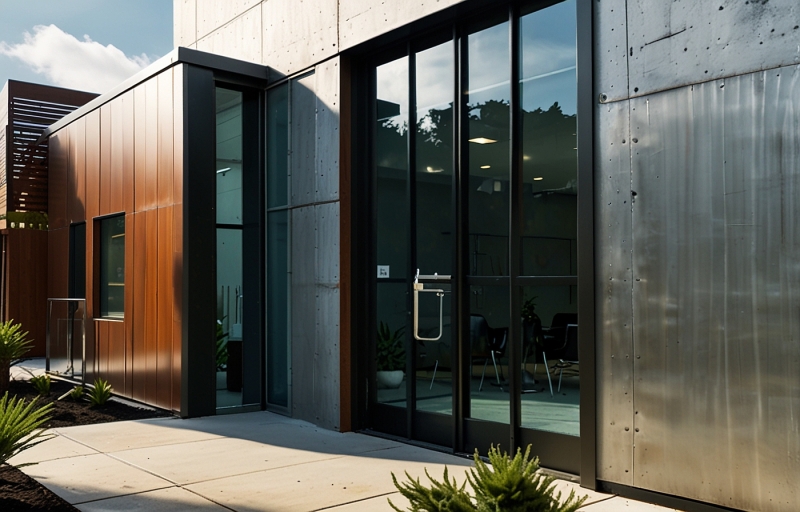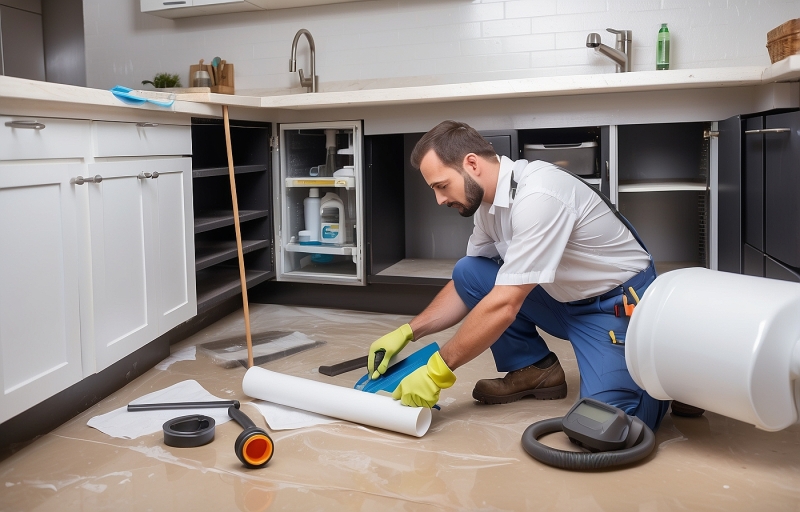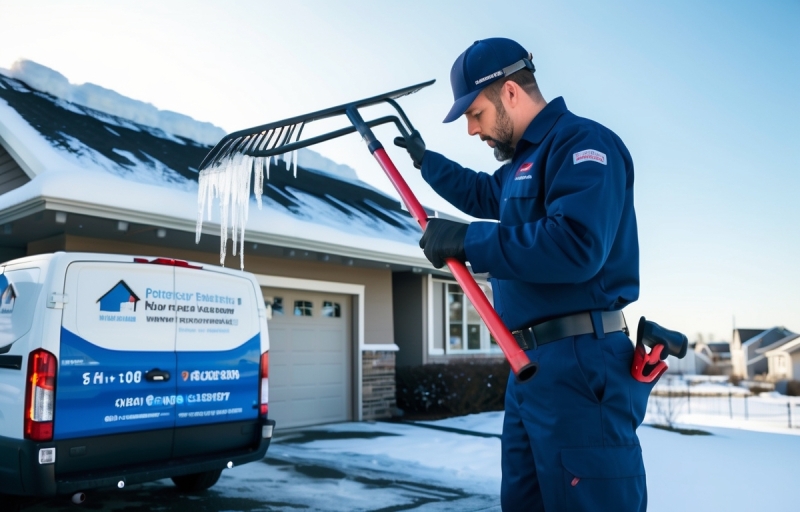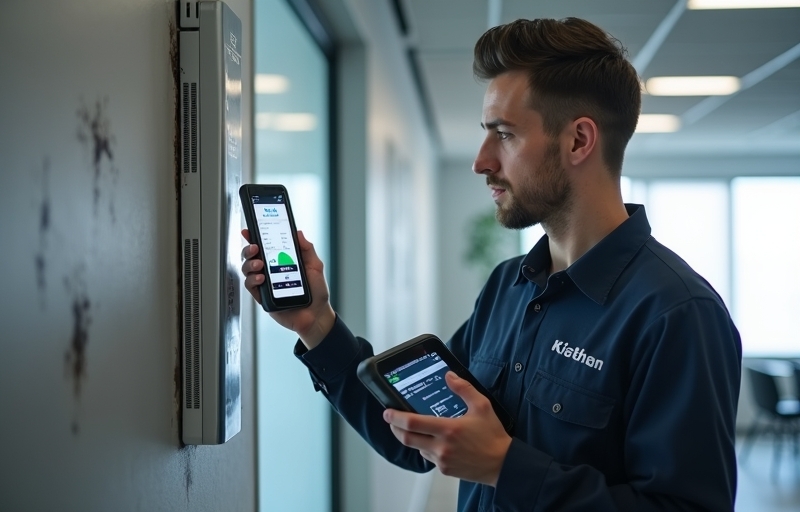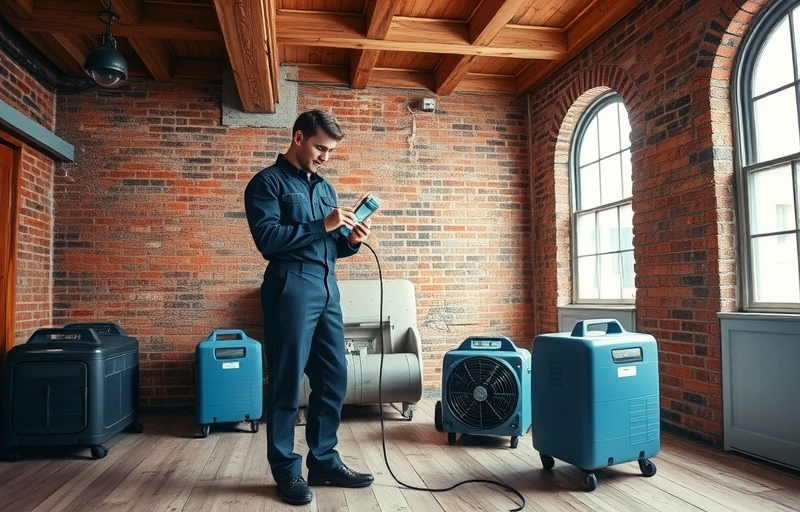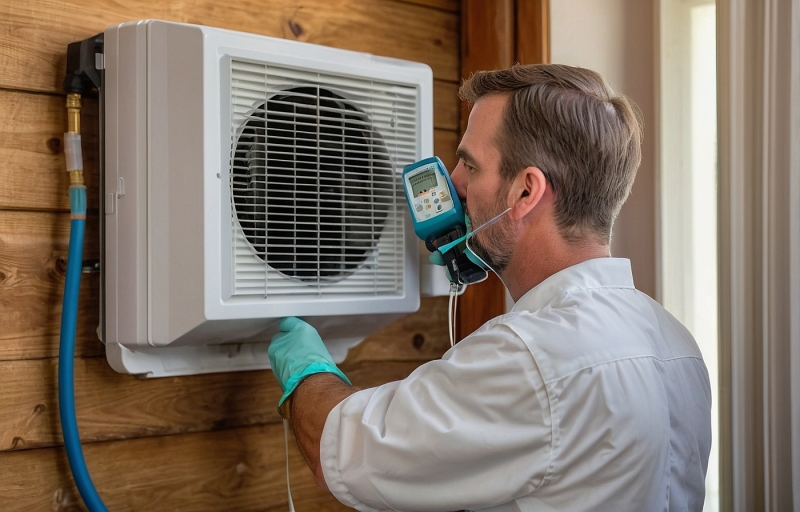Renovating your home is an exciting opportunity to refresh your space, but without proper precautions, it can also lead to unexpected problems like water damage. Knowing how to prevent water damage during renovations is essential to protect your investment and avoid costly repairs. Whether you’re updating a bathroom, remodeling a kitchen, or adding a new room, taking proactive steps can save you time, money, and stress. At COMMITTED TO QUALITY SERVICE, we specialize in Water Damage Restoration, using advanced equipment designed specifically for drying structures affected by severe water damage. Our team offers fast, friendly, and professional service to ensure your home stays safe and dry throughout any renovation project. If you experience any issues, don’t hesitate to call us at 855-933-7935. We’re here to help with expert water damage repair, flood prevention tips, and emergency water removal services. Protect your home and your peace of mind by learning the best practices for preventing water damage during renovations.
Assess Potential Water Risks Before Starting
Before diving into any renovation project, it is crucial to thoroughly evaluate potential water risks that could compromise your investment and cause significant damage. Water damage is one of the most common and costly issues homeowners face during renovations. According to the Insurance Information Institute, water damage accounts for nearly 29 percent of all homeowners insurance claims. Identifying vulnerabilities early can save you from expensive repairs and lengthy project delays.
Start by inspecting the existing plumbing system. Old or corroded pipes, faulty connections, and outdated fixtures can be ticking time bombs during construction. It is wise to have a licensed plumber assess the condition of your pipes before beginning any work. Pay close attention to areas like kitchens, bathrooms, basements, and laundry rooms where water usage is highest.
Another critical step is evaluating the building envelope. Roofs, windows, doors, and exterior walls must be watertight to prevent leaks during and after renovations. Even minor cracks or gaps can allow water intrusion, leading to mold growth and structural deterioration. According to the Environmental Protection Agency (EPA), mold can begin growing within 24 to 48 hours of water exposure, posing serious health risks.
It is also essential to consider the impact of weather during your renovation timeline. If your project involves opening up walls, removing roofing, or exposing any part of the structure, you must plan for rain or snow. Temporary coverings like tarps and weatherproof barriers can protect vulnerable areas from unexpected storms.
Here are some key areas to assess before starting your renovation project:
- Inspect all plumbing lines for leaks, corrosion, and outdated materials.
- Check the roof for missing shingles, damaged flashing, or signs of previous leaks.
- Evaluate the condition of windows and doors to ensure proper sealing and insulation.
- Examine the foundation for cracks or signs of water infiltration.
- Review the grading around your home to ensure water drains away from the foundation.
Additionally, it is wise to understand where hidden water damage might already exist. Hidden issues behind walls or under floors can worsen during construction if not addressed. For tips on spotting these problems early, you can refer to our guide on how to identify hidden water damage early.
When planning your renovation, it is beneficial to work with professionals who specialize in water damage prevention and restoration. At Projekt Restoration, our services include comprehensive assessments to help you safeguard your property before, during, and after your renovation project.
“An ounce of prevention is worth a pound of cure” — this old adage rings especially true when it comes to preventing water damage during renovations.
Incorporating waterproofing measures into your renovation plans can also provide long-term protection. Products like waterproof membranes, sump pumps, and moisture barriers are excellent investments. According to FEMA, installing a sump pump with a battery backup can reduce the risk of basement flooding by up to 80 percent.
If you are unsure where to start, consulting with a water damage specialist can provide peace of mind. Our team at Projekt Restoration is ready to assist you. Learn more about our commitment to protecting your home by visiting our our mission page.
For additional resources on water damage prevention and restoration, you may find the following helpful:
- The EPA’s guide on Mold and Moisture: https://www.epa.gov/mold/mold-guide
- FEMA’s Homeowner’s Guide to Retrofitting: https://www.fema.gov/emergency-managers/risk-management/building-science/homeowners-guide-retrofitting
By taking the time to assess potential water risks before starting your renovation, you can ensure a smoother, safer, and more successful project. If you have any questions or need expert advice, do not hesitate to reach out through our contact page.
Inspect and Upgrade Plumbing Systems
Before starting any renovation project, it is crucial to thoroughly assess the existing plumbing system. Old or faulty pipes can be a hidden source of water damage, leading to costly repairs and delays in your renovation timeline. Begin by inspecting all visible pipes for signs of corrosion, leaks, or wear. Pay close attention to areas under sinks, behind appliances, and within walls where plumbing is often hidden. If you notice any discoloration, moisture, or unusual odors, these could be indicators of underlying issues that need immediate attention. It is highly recommended to hire a licensed plumber to conduct a comprehensive inspection, as they have the tools and expertise to detect problems that may not be visible to the untrained eye.
Upgrading outdated plumbing is a proactive step that can save you from future headaches. Materials like galvanized steel, commonly used in older homes, are prone to rust and deterioration over time. Replacing them with modern alternatives such as PEX or copper piping can significantly enhance the durability and efficiency of your plumbing system. Additionally, consider upgrading fixtures like faucets, showerheads, and toilets to water-efficient models. Not only do these upgrades help prevent leaks, but they also contribute to water conservation efforts, aligning with sustainable renovation practices.
During renovations, it is common to move or add plumbing lines to accommodate new layouts or appliances. Ensure that any new installations comply with local building codes and standards. Poorly installed plumbing can lead to leaks behind walls or under floors, causing extensive water damage that may go unnoticed until it becomes a major problem. Working with experienced professionals who understand the complexities of plumbing systems is essential. You can learn more about the importance of professional services by visiting our services page.
Another critical aspect to consider is waterproofing areas that are prone to moisture, such as bathrooms, kitchens, and laundry rooms. Installing proper waterproof membranes and sealants around tubs, showers, and sinks can provide an extra layer of protection against water intrusion. It is also wise to install shut-off valves for all major water sources. In the event of a leak, these valves allow you to quickly stop the flow of water and minimize potential damage.
If your renovation involves significant plumbing changes, it is a good idea to document the new plumbing layout. Taking photos or keeping detailed notes can be incredibly helpful for future maintenance or repairs. This documentation can also assist in identifying hidden water damage early, a topic we cover extensively in our guide on how to identify hidden water damage early.
In addition to inspections and upgrades, regular maintenance of your plumbing system is key to preventing water damage. Schedule periodic checks to ensure that pipes, joints, and fixtures remain in good condition. Look out for signs of slow leaks, such as water stains on ceilings or walls, and address them promptly. Ignoring minor issues can lead to major problems over time, resulting in costly repairs and potential health hazards like mold growth.
At Projekt Restoration, we understand the importance of safeguarding your home during renovations. Our team is dedicated to providing expert advice and reliable solutions to help you prevent water damage and protect your investment. To learn more about who we are and what drives us, visit our our mission page. Whether you are planning a small remodel or a major renovation, taking the time to inspect and upgrade your plumbing system is a vital step toward ensuring a successful and stress-free project.
Use Waterproof Materials in Vulnerable Areas
When planning a renovation, one of the most critical steps to prevent future water damage is choosing the right materials for areas prone to moisture exposure. Kitchens, bathrooms, basements, and laundry rooms are particularly vulnerable to water infiltration, making it essential to use waterproof or water-resistant materials during the remodeling process. Selecting high-quality waterproof flooring, such as ceramic tiles, luxury vinyl, or sealed concrete, can significantly reduce the risk of water seeping into subfloors and causing structural damage. Similarly, installing moisture-resistant drywall, often referred to as green board, in bathrooms and other damp areas provides an extra layer of protection against mold and mildew growth.
In addition to flooring and walls, countertops and cabinetry should also be made from water-resistant materials. Quartz countertops, for example, are non-porous and highly resistant to water damage, making them an excellent choice for kitchens and bathrooms. For cabinetry, materials like marine-grade plywood or specially treated wood composites are designed to withstand high humidity levels without warping or deteriorating over time. Proper sealing of all surfaces is equally important. Applying waterproof sealants to tiles, grout lines, and even around fixtures like sinks and tubs can prevent water from penetrating into hidden areas where it can cause extensive damage.
Another critical aspect of using waterproof materials is ensuring that all installations are performed correctly. Even the best materials can fail if they are not installed properly. Hiring experienced professionals who understand the importance of waterproofing techniques can make a significant difference. If you are unsure about the best practices for waterproofing during renovations, consider consulting experts like those at Projekt Restoration, who specialize in comprehensive restoration and renovation services. Their expertise can help you choose the right materials and ensure they are installed to the highest standards.
Waterproofing is not just about selecting the right materials; it also involves integrating proper drainage systems and ventilation. For instance, installing a high-quality exhaust fan in bathrooms can help reduce humidity levels, while proper slope and drainage in showers and wet rooms ensure that water flows directly into drains without pooling. In basements, using waterproof membranes on walls and floors can prevent groundwater from seeping into the living space. These proactive measures, combined with the use of waterproof materials, create a multi-layered defense against water damage.
It is also beneficial to stay informed about the latest advancements in waterproofing technology. Innovations such as waterproof paints, advanced sealants, and smart moisture sensors can offer additional protection and peace of mind. Regular maintenance and inspections are equally important. Even the most durable waterproof materials can degrade over time, so it is wise to schedule periodic checks to identify and address any potential vulnerabilities before they escalate into major problems. For more tips on identifying early signs of water issues, you can refer to our detailed guide on how to identify hidden water damage early.
Choosing waterproof materials during renovations is an investment in the longevity and safety of your property. It not only protects your home from costly repairs but also preserves its aesthetic appeal and structural integrity. If you are planning a renovation and want to ensure every step is handled with care and expertise, do not hesitate to reach out through our contact page. Our team at Projekt Restoration is committed to helping you create a beautiful, durable, and water-resistant living space that you can enjoy for years to come.
Protect the Site with Proper Drainage Solutions
One of the most critical steps in preventing water damage during renovations is ensuring that the site has proper drainage solutions in place. Without effective drainage, water can easily accumulate around the foundation, seep into walls, and cause significant structural issues that are costly to repair. Before starting any renovation project, it is essential to assess the existing drainage systems and make necessary improvements. This includes checking gutters, downspouts, and grading around the property to ensure water flows away from the building. Poor drainage can lead to pooling water, which not only damages the structure but also creates an ideal environment for mold growth. If you are unsure about the current drainage setup, consulting with professionals like those at Projekt Restoration can help you identify vulnerabilities and recommend the best solutions.
During renovations, temporary changes to the landscape or structure can disrupt normal water flow. For example, excavation work or the addition of new structures can block natural drainage paths, leading to unexpected water accumulation. To avoid this, it is important to plan for temporary drainage solutions such as trenches, sump pumps, or diversion channels. These measures can effectively redirect water away from the renovation site, minimizing the risk of water intrusion. Additionally, installing moisture barriers and waterproof membranes in vulnerable areas can offer an extra layer of protection. For those looking to understand more about how water damage can impact a property, visiting the water damage resource page can provide valuable insights.
Another important aspect of drainage management during renovations is regular monitoring. Weather conditions can change rapidly, and a sudden rainstorm can overwhelm even well-planned drainage systems. Regularly inspecting the site, especially after heavy rainfall, ensures that any issues are caught early before they escalate into major problems. It is also wise to have an emergency plan in place, including access to pumps and other equipment that can quickly remove standing water if necessary. Proper site management not only protects the current renovation work but also preserves the long-term integrity of the property.
In addition to protecting the site during active renovations, it is crucial to think about the long-term drainage needs of the property. Once renovations are complete, ensuring that the final landscaping and structural changes support effective water management is key. This might involve regrading the yard, installing French drains, or upgrading gutter systems. A well-thought-out drainage plan will help prevent future water damage and maintain the value of your investment. For more information on how to safeguard your property against water-related issues, you can explore helpful tips and advice on the blog section of Projekt Restoration.
Ultimately, taking the time to implement proper drainage solutions during renovations is an investment in the safety and longevity of your property. It helps avoid costly repairs, protects indoor air quality by preventing mold growth, and ensures that your renovation efforts stand the test of time. Whether you are undertaking a small remodel or a major construction project, prioritizing drainage is a smart and necessary step. If you have questions or need professional assistance, the team at Projekt Restoration is ready to help guide you through the process, ensuring your renovation is successful and water damage free.
Monitor Weather Conditions During Outdoor Work
When undertaking outdoor renovations, keeping a close eye on the weather forecast is essential to prevent costly water damage. Sudden rainstorms, high humidity, or unexpected weather changes can quickly compromise exposed structures, leading to moisture infiltration, mold growth, and structural deterioration. Before starting any exterior work, it is crucial to plan around the weather by checking reliable forecasts and preparing for potential delays. Covering exposed areas with waterproof tarps and using moisture-resistant materials can offer an extra layer of protection. Additionally, scheduling critical tasks like roofing, siding, or foundation work during dry periods can significantly reduce the risk of water-related issues. It is also wise to have a contingency plan in place, such as temporary drainage solutions or emergency sealing products, to address unexpected weather events. Proper site preparation, including grading the land to direct water away from the work area, can further safeguard your renovation project. If you are unsure about the best practices for weatherproofing your renovation site, consulting with professionals can make a big difference. At Projekt Restoration, we offer a range of services designed to protect your property during construction and renovation. Our team understands the importance of proactive measures to prevent water damage and can guide you through the process. For more information about our commitment to quality and customer satisfaction, visit our our mission page. Staying informed and prepared not only protects your investment but also ensures a smoother, more efficient renovation experience. Whether you are working on a small exterior update or a major outdoor remodel, monitoring weather conditions diligently is a key step in safeguarding your home from unnecessary water damage.
Seal Openings and Gaps Effectively
During any renovation project, one of the most critical steps to prevent water damage is ensuring that all openings and gaps are properly sealed. Renovations often involve removing walls, windows, doors, or plumbing fixtures, which can leave your home vulnerable to moisture intrusion if not handled carefully. Even small gaps around pipes, vents, or window frames can allow water to seep in, leading to costly repairs and potential mold growth. To avoid these issues, it is essential to inspect all areas where materials meet and seal them with appropriate products such as waterproof caulking, expanding foam, or weather-resistant sealants. Pay special attention to areas around newly installed windows and doors, as these are common weak points for water infiltration.
When sealing gaps, it is important to choose the right materials for the specific surfaces and environmental conditions. For example, exterior gaps exposed to rain and temperature fluctuations require heavy-duty, flexible sealants that can withstand expansion and contraction. Interior gaps, especially those near plumbing fixtures, should be sealed with waterproof and mold-resistant products. Proper sealing not only prevents water from entering but also improves energy efficiency by reducing drafts. If you are unsure about the best sealing methods or materials, consulting a professional can save you time and prevent future headaches. You can learn more about professional services by visiting our services page.
Another important aspect of sealing during renovations is addressing hidden or hard-to-reach areas. Spaces behind walls, under floors, and around plumbing penetrations are often overlooked but can be significant sources of water damage if not properly sealed. Before closing up walls or installing new flooring, take the time to inspect and seal these hidden areas. Using moisture barriers or waterproof membranes in addition to sealants can provide an extra layer of protection, especially in moisture-prone areas like bathrooms, kitchens, and basements. For tips on identifying potential hidden risks, you might find our guide on how to identify hidden water damage early helpful.
It is also crucial to maintain the seals after the renovation is complete. Over time, sealants can degrade due to exposure to moisture, UV rays, and temperature changes. Regular inspections and timely reapplication of sealants can extend the life of your renovation work and continue to protect your home from water damage. If you notice cracks, gaps, or signs of water intrusion, address them immediately to prevent more extensive damage. For more information about our commitment to protecting homes during and after renovations, visit our our mission page.
Taking the time to seal openings and gaps effectively during renovations is a small investment that can save you from major expenses and stress in the future. Proper sealing not only protects your property from water damage but also enhances the overall durability and value of your home. Whether you are undertaking a small bathroom remodel or a full home renovation, prioritizing moisture protection is key to a successful and lasting result.
Conduct Regular Inspections Throughout the Renovation
One of the most effective ways to prevent water damage during renovations is by conducting regular inspections throughout the entire process. Renovations often involve altering plumbing systems, removing walls, and installing new fixtures, all of which can introduce potential risks for leaks and moisture buildup. By scheduling frequent checks at different stages of the project, you can catch small issues before they escalate into major problems. Inspections should focus on areas where water is most likely to cause damage, such as around newly installed pipes, under sinks, behind walls, and near roofing or window installations. It is crucial to verify that all seals, joints, and waterproofing measures are properly applied and intact.
During these inspections, pay close attention to any signs of moisture, such as damp spots, discoloration, or a musty smell. These early indicators can help you address problems before they lead to costly repairs. It is also wise to use moisture meters and thermal imaging cameras to detect hidden water issues that are not visible to the naked eye. If you are unsure about what to look for, consulting a professional restoration company can provide peace of mind. Companies like Projekt Restoration specialize in identifying and mitigating water damage risks. You can learn more about their expertise by visiting their about page.
Another important aspect of regular inspections is ensuring that contractors and workers are following best practices for water protection. Make sure that all plumbing work is tested for leaks before walls are closed up, and that roofing and exterior work are properly sealed against rain. If you notice any shortcuts being taken, address them immediately to avoid future headaches. Regular communication with your renovation team is key to maintaining high standards and preventing water intrusion.
In addition to checking plumbing and structural elements, it is important to inspect materials being used during the renovation. Materials like drywall, insulation, and flooring can be highly susceptible to water damage if they are exposed to moisture before installation. Ensure that all building materials are stored in a dry, covered area and are inspected for any signs of dampness before use. This proactive approach can save you from having to replace compromised materials later on.
If you do encounter any signs of water damage during your inspections, it is critical to act quickly. Delaying repairs can lead to mold growth, structural issues, and even health problems. For more information on how to handle water damage effectively, you can explore the water damage services offered by Projekt Restoration. Their team is equipped to handle everything from minor leaks to major flooding incidents, ensuring that your renovation stays on track.
Finally, documenting your inspections can be incredibly helpful. Take photos and notes during each walkthrough to create a record of the renovation’s progress and any issues that arise. This documentation can be valuable if disputes occur with contractors or if you need to file an insurance claim. It also provides a clear maintenance history for future reference.
By making regular inspections a priority during your renovation, you can significantly reduce the risk of water damage and ensure a smoother, more successful project. For additional tips and expert advice, be sure to check out the helpful articles available on Projekt Restoration’s blog. Taking these proactive steps will not only protect your investment but also provide lasting peace of mind.
Sure! Here’s a suitable conclusion for your blog on “How to Prevent Water Damage During Renovations”:
Renovations are an exciting opportunity to refresh and improve your home, but without careful planning, they can also open the door to costly water damage. By taking proactive steps—such as inspecting plumbing systems, using quality materials, sealing vulnerable areas, and working with experienced professionals—you can significantly reduce the risk of water-related issues. Remember, a little extra attention during the renovation process can save you from major headaches down the road. Prioritize prevention, stay vigilant, and enjoy the peace of mind that comes with a beautifully updated and well-protected home.
Would you like a few more variations depending on the tone you’re aiming for (e.g., professional, friendly, motivational)?





